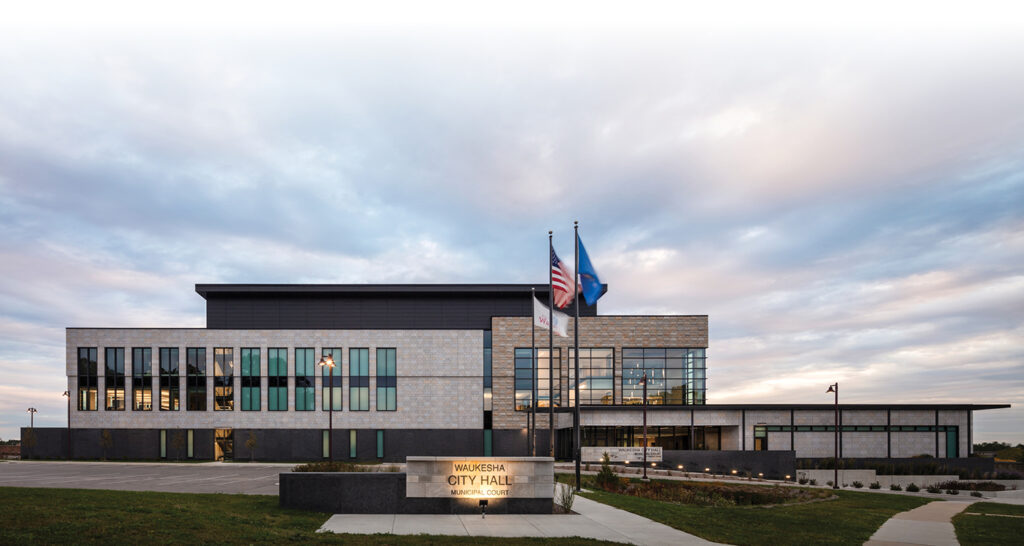Designers bridge very different worlds — creative, technical, and consultative — and there can be an air of mystery about the process and the various roles within it. For the latest episode of Side of Design, we invited some of the BWBR team to clear things up, including Sam Griesgraber, Senior Interior Designer; Craig Peterson, Principal, as well as Design Leader and Director of Design; and Steve Busse, Architect and Design Leader.
While their roles are different, all three confirm the same thing: they wear a lot of hats, and that’s part of the fun. Each navigates a combination of client-facing tasks, collaboration with design teams, and behind-the-scenes work on functionality and regulatory requirements.
Power in the Process
If you were to give a very high-level job description of a design leader, it might be: “Taking a big idea and turning it into a functional building that serves a purpose and also delights in some way.” That’s Craig’s summary, and it aligns with what he calls one of the most exciting parts of the design process, which is “translating something intangible into something tangible.”
So what, exactly, does that process look like? Standard design projects rely on a three-phase approach:
- Schematic design
- Design development
- Construction documents
Schematic design is about the “big idea.” The design team works closely with clients to identify needs and project parameters, asking important questions from the beginning. What are this client’s unique goals? What story should the final product tell? What are the functional requirements? Weaving all of those threads together is really the starting point of a design.
The second phase, design development, involves refining that big idea, resulting in a precise plan. Budget is a major consideration in the design development phase, and the design must be considered down to the very smallest detail.
Once design development is complete, the third phase can begin, which translates the design into construction documents that contractors use to actually erect the building. Yet the design process often continues through this final phase to accommodate the inevitable surprises that occur during the construction process, many of which require creative, collaborative solutions. As Sam explains, “For every project, there are always twists and turns throughout the process, so it’s constant refinement all the way from schematic into construction.”
A Dose of Inspiration
Changes throughout the process aren’t the only things keeping our designers on their toes. Even with repeat clients, the team approaches every project with fresh eyes because there is always something different; the location, the context, the need, or the budget — and they’re constantly searching for new ideas and inspiration.
Steve puts it this way, “One of the most awesome parts about our jobs is that every project is different. We have the chance to dig into what’s the history of the client, what really drives them? Where is the site located? What is the climate like in that region? What are the weather patterns? Are there any cool land features there? Are there icons in that community we can incorporate, because we design spaces that people are going to inhabit for 10, 20, 50 years — so how can we connect to that place? That, for me is a really nice way to find inspiration.”
How do designers know if they’ve done their jobs well? Client satisfaction is obviously a top priority, but for our experts, it’s about striving for an even higher, less tangible standard. Steve says he wants to create spaces “that are memorable; that hit you at a deeper level; that stick with you.” Designers also consider elements like light and volume, the way a space changes through different seasons, and the feel of a space — something that is hard to quantify but is an essential part of quality design. Sam mentions the importance of materials when it comes to supporting the concept, ensuring functionality, and also supporting any other goals for the design like sustainability, accessibility, or even the mood. Acoustics, touch, and even smell are all factors good designers consider.
It Takes a Team
Every project undertaken by the firm is a collective effort, so the importance of teamwork can’t be overstated. By inviting diverse perspectives and outside opinions, the design team can break free from established patterns and unlock new creative possibilities. Furthermore, involving clients throughout the process makes sure that their needs and aspirations are given due consideration, transforming them into partners in the design journey. This collaborative approach establishes refined ideas, optimized spaces, and the achievement of the best possible outcomes.
Sam highlighted the value of collaboration not only within the design team but also across multiple disciplines within the office. From the early stages of a project, collaboration is fostered and encouraged, utilizing a well-integrated and holistic approach to design. By bringing together diverse expertise and perspectives, BWBR makes sure that all aspects of a project, from architectural design to engineering and beyond, are seamlessly coordinated, resulting in comprehensive and successful outcomes.
That’s a lot to take on, but these folks wouldn’t have it any other way. “I have a lot of responsibility, but I consider that responsibility to be a privilege,” says Craig. “The work we do on a day-to-day basis is really exciting and rewarding, and makes for a great day, every day.”








